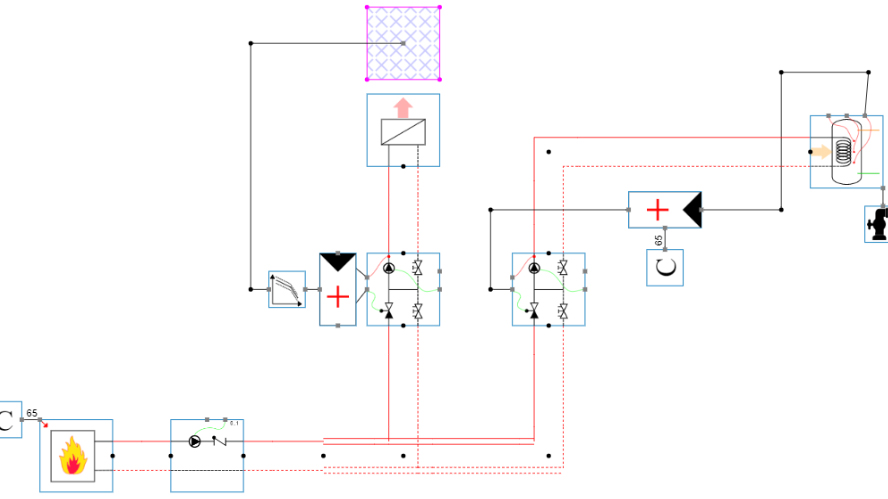Rethinking How Engineers Explore Design Options
Traditional HVAC design workflows often force engineers to choose between speed and accuracy. Early-stage concept development relies heavily on spreadsheets, experience, and manufacturer tables — all valuable, but too slow and too limited when multiple design paths must be evaluated.
Simulation tools change that reality. Instead of rebuilding calculations for every new scenario, engineers can rapidly model and compare entire system configurations. This makes it possible to explore more concepts in less time, without compromising on technical depth or reliability.
Why Manual Exploration Slows Down Innovation
Every engineer knows how quickly design iterations add up. A small change in flow rate affects pump selection. A different heat source alters operating temperatures. A variation in ΔT reshapes the hydraulic balance.
When each scenario demands new calculations, even highly skilled teams limit how many concepts they explore — not because they lack ideas, but because they lack time.
Simulation removes that bottleneck by automating the heavy lifting. Engineers can adjust parameters instantly, rerun full-system behaviour, and identify the strongest options at a fraction of the usual workload.
See how rapid design exploration transforms HVAC engineering ›
Testing More Concepts Without Increasing Risk
Fast design exploration only adds value when results remain reliable. That’s why simulation has become such a powerful enabler for modern engineering workflows. It provides the ability to model:
- temperature and flow behaviour under varying conditions
- hydraulic balance across entire networks
- energy use and CO₂ profiles
- pump performance and control interactions
Engineers no longer have to choose between “quick” and “correct”. They can explore a wider design space while maintaining full confidence in each option’s performance.
This leads to better-informed decisions, clearer insights, and fewer surprises later in the project.
Accelerating Client Alignment Through Clear Comparisons
When clients understand the impact of different system configurations, decisions move faster. Simulation tools make this simple by visualising performance differences clearly and objectively.
Instead of presenting static diagrams or theoretical calculations, engineers can show how each option performs across comfort, efficiency, and sustainability metrics. This eliminates subjective debate and replaces uncertainty with measurable evidence.
It’s a faster path to alignment — and a smoother path to project approval.
Designing Faster Without Compromising Quality
Speed in HVAC design is only valuable when it supports accuracy, transparency, and predictable outcomes. Simulation tools allow engineers to accelerate early-stage exploration while maintaining (or improving) technical rigour.
More concepts explored. Better insights. Stronger decisions.
That’s the future of HVAC design exploration.
Discover how simulation accelerates HVAC concept comparison ›
FAQ: Exploring HVAC Design Options Faster



.jpg)
